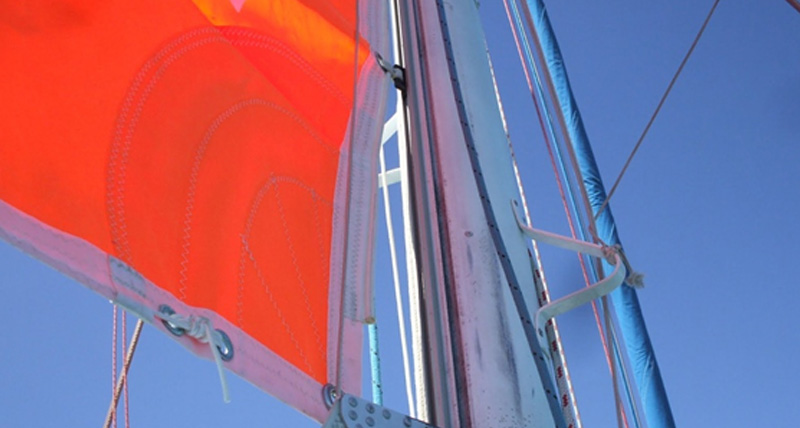
Storm sail
Nothing is as changeable as the weather. A sailing trip on a beautiful summer day can turn into a survival trip in harsh conditions within minutes. Especially if you are taking a longer trip, it is highly recommended in the interest of safety to supplement your sailing wardrobe with a storm jib and/or a trysail. Hopefully you will never have to use them but it is a very nice feeling when you and your boat are ready for a storm. Especially when the weather turns quickly, the boat goes askew and you have to deal with high waves, it is very important that storm sails can be set easily and quickly. In addition, a storm sail must be strong under all conditions so that you can continue sailing safely.
Versions
Storm sails are made of heavy dacron because this type of cloth has proven itself under the toughest conditions. It is strong and will not tear easily. Where necessary, extra heavy reinforcements are made by means of drawstrings and corner reinforcements. The storm sails can be made in white dacron but at a small additional cost the sails can also be made entirely or partially in bright orange dacron to greatly increase visibility.
Storm jib
A storm jib is often the first addition to the existing set of sails. Sailmaker De Vries Maritiem has stormjibs with sliders that are suitable for running on a (cutter) staysail. We also make stormjibs that can be carried over a furled genoa.
Trysail
If you make a long trip with any regularity it is a consideration to buy a 3e reef with extra reinforced corners, pull straps and press sleeves in the mainsail. This allows you to further reduce your mainsail in very strong winds.
In very extreme situations, you may prefer to reduce sail even more. For such situations, the advice is to have a trysail on board. A try sail is usually run on a separate rail on the mast next to the rail for the mainsail. The top is hoisted to the mainsail halyard and the clew is attached to an eye on the deck.